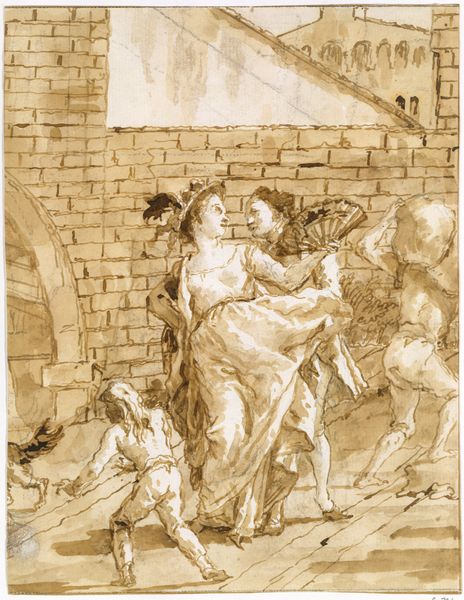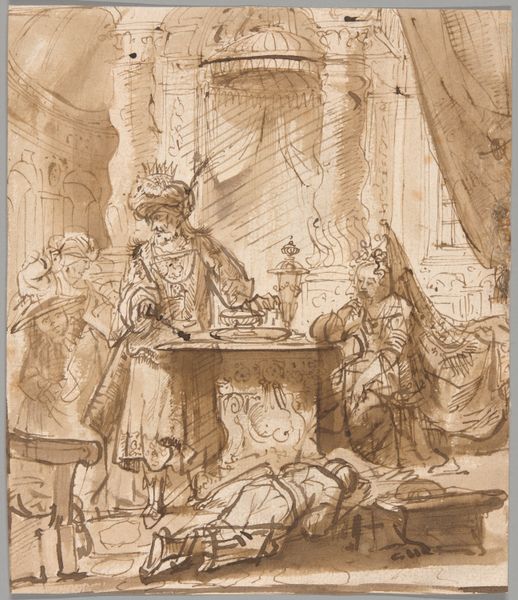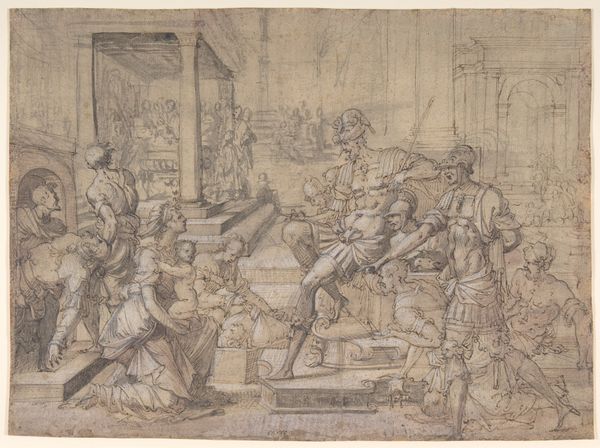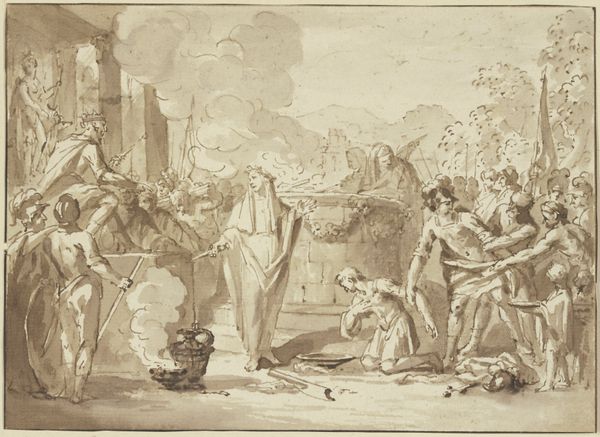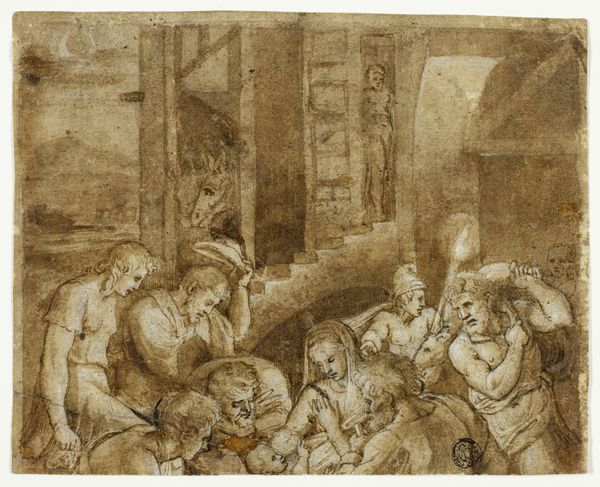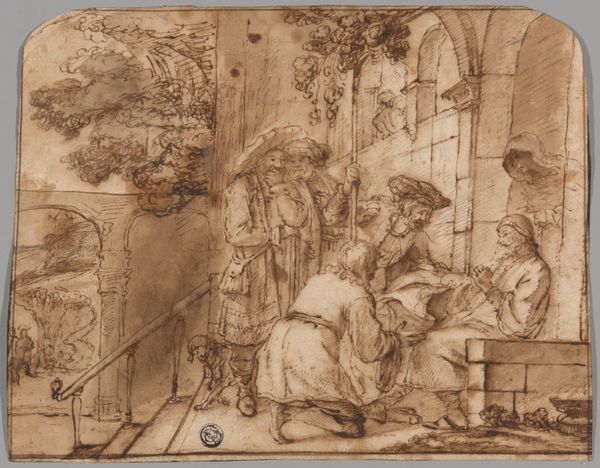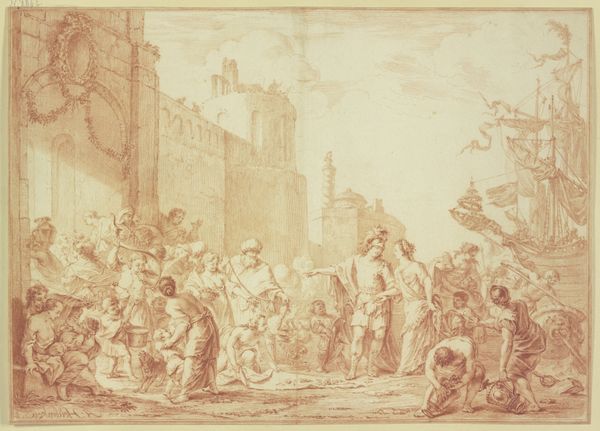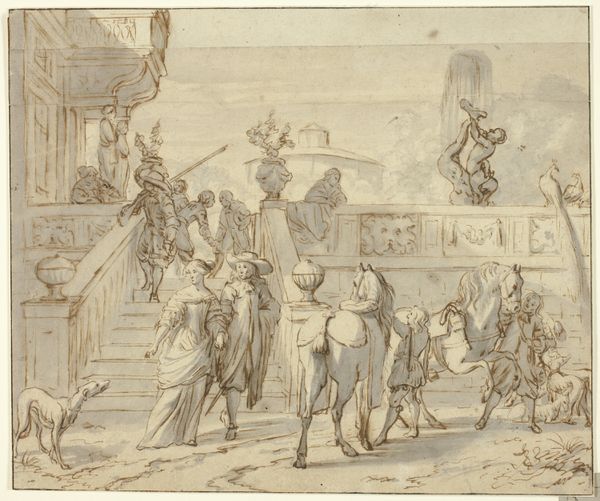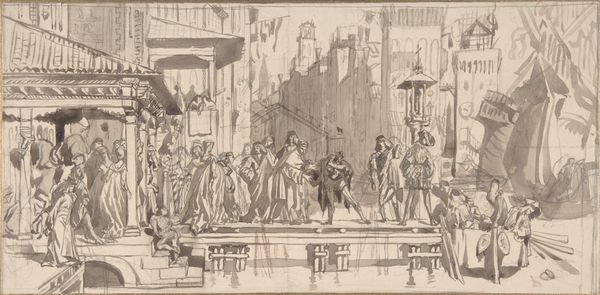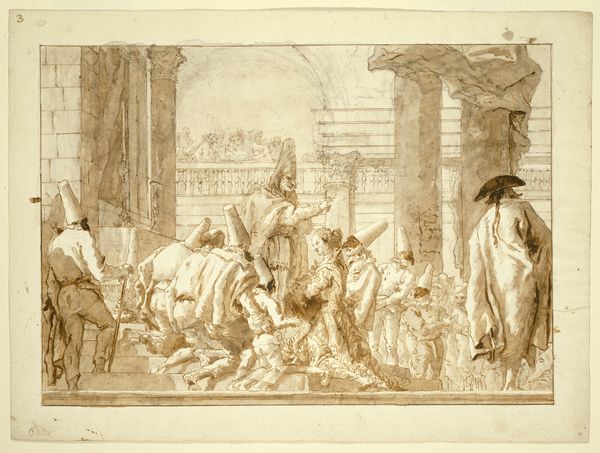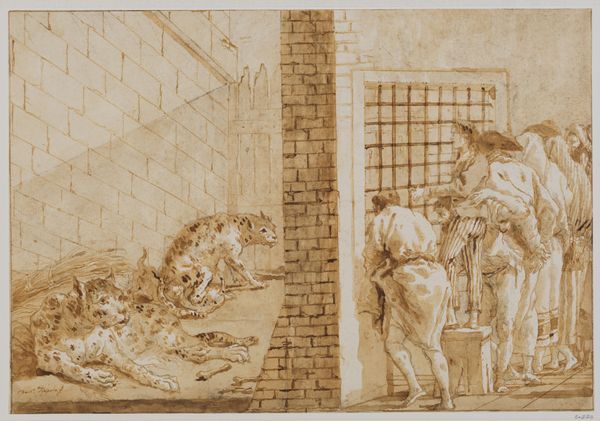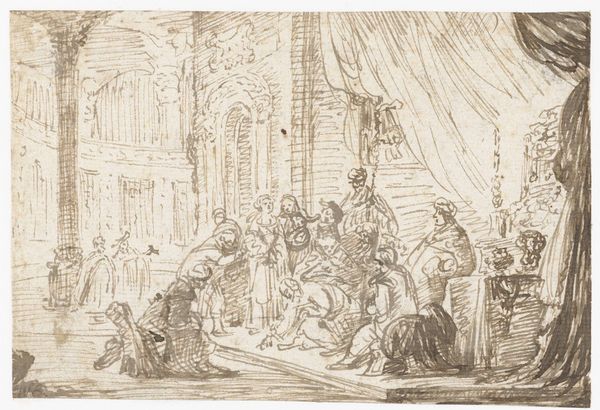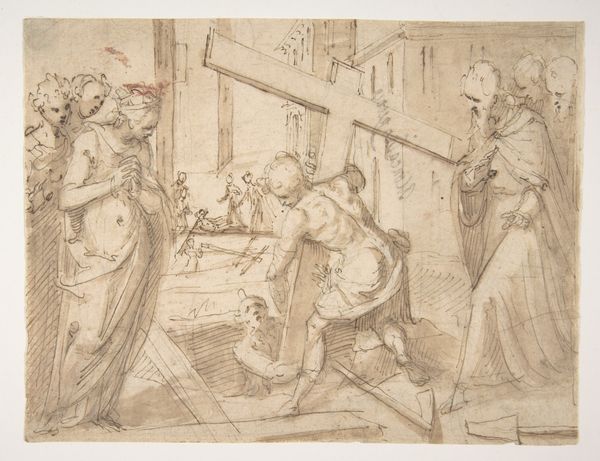
Dimensions: overall: 35.1 × 46.7 cm (13 13/16 × 18 3/8 in.)
Copyright: National Gallery of Art: CC0 1.0
Curator: Before us is Giovanni Domenico Tiepolo's drawing, "The Prison Visit," created sometime between 1797 and 1804 using pen and ink. What strikes you first about it? Editor: Immediately, it's the subdued tone and the bustling activity despite the supposed somber setting. The use of primarily sepia ink washes lends a somewhat gritty realism, contrasting with the more fanciful narratives we often associate with the Baroque era. Curator: The process Tiepolo used is quite revealing. This wasn’t a preparatory sketch, but a fully realized work of art in itself. The layering of washes creates depth and texture. Considering it's ink on paper, the preservation is remarkable and allows us to see the labor, from the careful cross-hatching to build shadow to the quick, sure strokes defining figures. Editor: Absolutely. Looking at the context, though, I am thinking about prisons as spaces of social control, especially during Tiepolo's time. These visits weren't simply acts of charity, but highly regulated events, controlled by the state and the Church. The presence of guards, religious figures... everyone has a role to play in this performance. Curator: Indeed, these figures—the masked carnival-goers, even—point towards a unique form of Venetian social commentary. Their presence blurs the lines between the condemned and society at large. Notice the repeated use of conical hats, indicating carnival or possibly even fools. Is Tiepolo indicting the entire social structure? Editor: Precisely! Are these "criminals" any more foolish than the system that confines them? This drawing allows us to unpack those social ironies through the details embedded in it. Consider where this would be exhibited: Likely not for a broad public, but a discerning collector, who themselves benefited from this social stratification. Curator: I hadn't considered that! It's interesting to think how the act of collecting this work places the patron in a particular, and maybe complicit, relationship with this social theater. Editor: Exactly. And understanding how social position affected what one could create, consume, and ultimately control… Curator: It allows a completely different, even radical, reading of Baroque artistry. This has given me a lot to reconsider about not just Tiepolo but about the political power inherent to visual artwork. Editor: And, by exploring these histories, it makes us consider the complex ethical entanglements inherent to the making and experiencing of art throughout history. A compelling artwork, indeed.
Comments
No comments
Be the first to comment and join the conversation on the ultimate creative platform.
